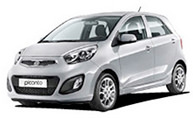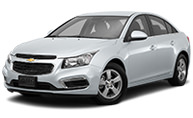Trinidad things To Do - activities, hotels, golf courses & car rental
The Trinidad hotel and activities guide offers stay over guests and cruise ship visitors information and discount reservations for hotels, villa rentals, car rentals, activities and shore excursions in Trinidad.
Plan your trip from home and save a lot versus booking via your cruise ship or travel agent. Book your resort, hotel, car rental or activity in Trinidad with the Trinidad Hotels & Travel Guide at up to 50% less then the regular published rates.
One of the main attractions in Trinidad is its vibrant culture and festivals. Trinidad is known for its lively carnival, celebrated annually in February, where visitors can enjoy colorful costumes, live music and street parties. The island is also famous for its steel pan music, which originated in Trinidad and is considered a national symbol. Visitors can also enjoy traditional calypso and soca music, and attend performances throughout the year.
Trinidad is also known for its beautiful beaches and natural landscapes. The island's north coast offers some of the best beaches in Trinidad such as Maracas Bay, one of the most popular beaches and offers a great opportunity for swimming and sunbathing. Visitors can also take a trip to the Asa Wright Nature Centre, a nature reserve located in the island's northern range, where they can observe a wide variety of birds and other wildlife.
Trinidad is also known for its history and heritage. Visitors can take a trip to the Pitch Lake, a unique natural wonder that is the largest natural deposit of asphalt in the world. They can also visit Fort George, a 19th-century fortress located in the capital city of Port of Spain, which offers great views of the city and the sea.
Trinidad is also famous for its delicious food and its diverse culinary scene, which reflects the island's multicultural heritage. Visitors can enjoy traditional dishes such as roti, doubles, and curries, as well as street food such as corn soup, and bake and shark.
Overall, Trinidad is a destination that offers something for every traveler. Whether you're looking for culture, history, natural beauty, or delicious food, Trinidad has it all. The island is known for its vibrant culture, beautiful beaches, and diverse heritage. A visit to Trinidad is sure to leave you with lasting memories and a desire to return.
Trinidad Travel Information
The Republic of Trinidad and Tobago (English: Republic of Trinidad and Tobago) is a country located in the southeastern corner of the Caribbean Sea, off the coast of Venezuela. It consists of two main islands and several smaller islets. The largest island is Trinidad; the island of Tobago is much smaller and much less populated. Both islands are part of the Windward Islands of the Lesser Antilles.
Independent history
In the run-up to independence, the West Indies Federation was formed in 1958 by the United Kingdom, of which Trinidad and Tobago were a part. In 1961 Jamaica left the West Indies Federation out of dissatisfaction with the limited control over the population and the lack of independence. This put Trinidad and Tobago in a similar position, whereupon Prime Minister Williams withdrew the islands from the federation, which dissolved not long after.
On August 31, 1962, Trinidad and Tobago became independent with Eric Williams as the first prime minister, which he would remain until his death in 1981. Trinidad and Tobago was initially a monarchy with the British Queen as head of state. In 1976 the monarchy was abolished and the republic was proclaimed.
In 1963, under great pressure from Williams, the Americans returned the naval port of Chaguaramas to Trinidad and Tobago.
Unemployment then grew and from 1968 the Black Power movement from the United States also gained support in Trinidad and Tobago. In 1970 this escalated into the impending Black Power Revolution. In addition to declaring a state of emergency, Williams attempted to defuse tensions with speeches in which he indicated his support for Black Power's ideas. He also made changes to his cabinet, including the removal of two white ministers.
At the beginning of the 21st century, the country is one of the most prosperous in the Caribbean, mainly due to the extraction and processing of oil and natural gas. Tourism, most of it on Tobago, is expanding and growing.
Geography
The island of Trinidad is located just over 10 kilometers off the northeast coast of Venezuela, in front of the Orinoco Delta. It is about 60 kilometers long and up to 80 km wide and its area is just over 4800 km². Tobago is a lot smaller at about 300 km² and is a maximum of 42 kilometers long and 13 km wide. The island is located about 30 km northeast of Trinidad.
The terrain of the islands consists mainly of plains, although El Cerro del Aripo reaches an altitude of 940 meters in Trinidad. El Tucuche is slightly lower at 936 meters, but is also located in the same mountain range in the north of the island, parallel to the coast. Several rivers flow here and the Ortoire is the longest at 50 kilometres. The Caroni flows through the most densely populated part of the island and flows into the Gulf of Paria. Tobago is mountainous and the highest peak is 640 meters above sea level. The island was formed by volcanoes, but they are no longer active.
The climate is tropical with a rainy season in the second half of the year. The average annual temperature is around 26°C. Unlike other Caribbean islands, Trinidad and Tobago experience tropical storms on rare occasions. In August 1974 Hurricane Alma passed through the islands.



















 English (Canada)
English (Canada) Español (Argentina)
Español (Argentina) Español (Chile)
Español (Chile) Español (Colombia)
Español (Colombia) Español (México)
Español (México) Español (Perú)
Español (Perú) Español (Venezuela)
Español (Venezuela) Français (Canada)
Français (Canada) Português (Brasil)
Português (Brasil) English
English Dansk
Dansk Deutsch (Österreich)
Deutsch (Österreich) Deutsch (Schweiz)
Deutsch (Schweiz) Deutsch
Deutsch English (UK)
English (UK) English (Ireland)
English (Ireland) Español
Español Français (Belgique)
Français (Belgique) Français (Suisse)
Français (Suisse) Français
Français Italiano (Svizzera)
Italiano (Svizzera) Italiano
Italiano Nederlands (België)
Nederlands (België) Nederlands
Nederlands Norsk
Norsk Português (Portugal)
Português (Portugal) Svenska
Svenska English (Australia)
English (Australia) English (Hong Kong)
English (Hong Kong) English (India)
English (India) English (Malaysia)
English (Malaysia) English (New Zealand)
English (New Zealand) English (Philippines)
English (Philippines) English (Singapore)
English (Singapore) 日本語
日本語 English (South Africa)
English (South Africa)